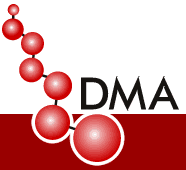How do managers add value?
A layer of management is required only where the immediate manager is accountable for taking decisions that cannot be taken by subordinates and need not be taken by superiors.
Role-holders must add value or enrich the decision making process on the spine of accountability. Subordinates cannot make these decisions, not because they are not permitted to, but because they do not have the relevant knowledge or experience. Similarly, if a subordinate and the immediate superior are both working in the same decision making zone, then one of them is superfluous. The application of DMA logic enables the integrated management and development of people. The Model lays down a set of principles which govern:
- How
work is organised
- How
the Organization is designed
- How
work is rewarded
- How
individuals can be fulfilled
in their work
- How
performance and potential can
be assessed
- How
individuals can grow and develop
- How challenging future assignments can be planned.
In short, the DMA Solution Set offers a blueprint for the leadership and development of people.
The DMA Solution Set is shown diagrammatically below:

The Work Level identifies the key resources and results in a given environment for which an individual is accountable. Roles in the same level will be of broadly similar complexity. The link in the model to 'Management Layer' demonstrates the impact of the DMA logic on Organization design. This is the Golden Rule principle of DMA, i.e. a layer of management is required only where the immediate manager is accountable for making decisions that cannot be taken by subordinates. The 'Nature of Contribution' indicates that the balance of accountable work in the various levels is either operational or strategic, with the change-over from predominently operational to predominently strategic occurring between levels 3 and 4.
The DMA Solution Set differentiates
accountability
levels
against
seven
criteria,
termed
the DMA
elements.
Back
to Introducing DMA
